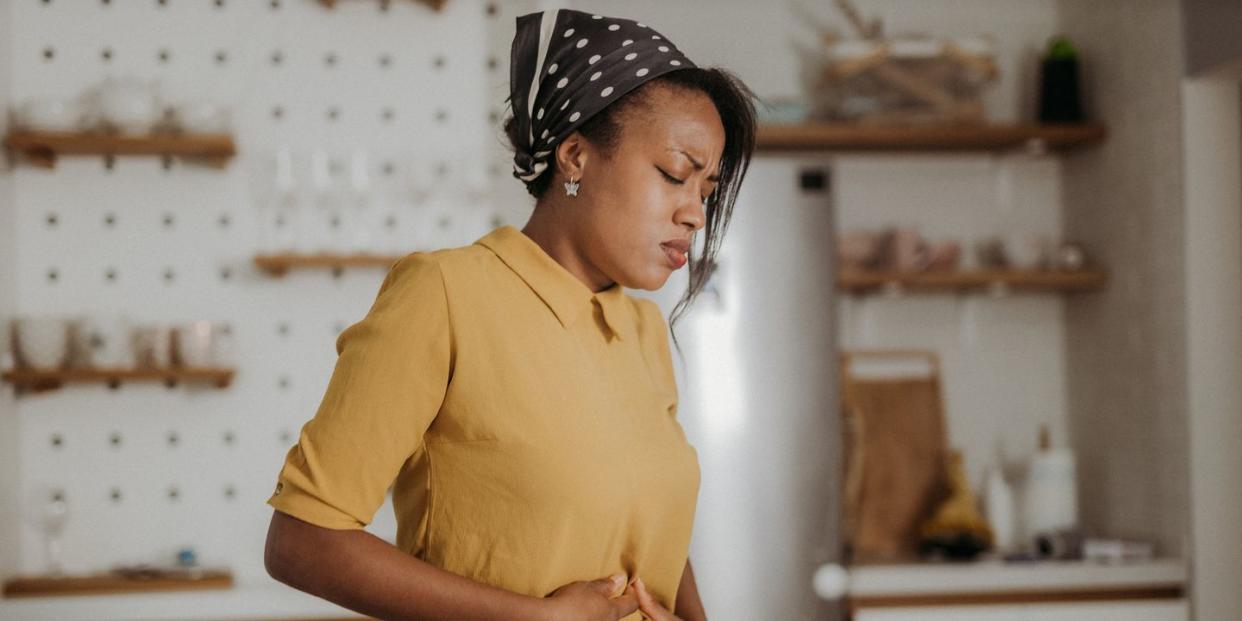What Is the Diverticulitis Diet, and Should You Follow It?

Being diagnosed with an inflammatory digestive condition like diverticulitis can raise a lot of questions, including whether you should be on a special diverticulitis diet.
While your doctor will likely go over treatment options with you, including what diet you should be on, you may still have questions. Here’s what you need to know about going on a diverticulitis diet, and how it can help.
What is diverticulitis?
Diverticulitis is an infection of diverticula, small pouches that bulge out through your colon, Medline Plus explains. If you have diverticula, it’s a condition that’s called diverticulosis—this is more common as people get older, and about half of all people over age 60 have diverticulosis, Medline Plus says. (It’s thought that a low-fiber diet causes this.)
Most people with diverticula don’t have any symptoms and don’t even know they have these pouches, the National Institute of Diabetes and Digestive and Kidney Diseases (NIDDK) explains. But if the diverticula become inflamed, it’s a condition called diverticulitis.
Diverticulitis can come on quickly and can cause serious complications.
Symptoms of diverticulitis
According to the Mayo Clinic, symptoms of diverticulitis can include:
Pain that can last for several days that is usually concentrated on the lower left side of the abdomen
Nausea and vomiting
Fever
Abdominal tenderness
Constipation or diarrhea
Do you need to follow a diverticulitis diet?
It’s usually recommended that people with diverticulitis follow a special diet, along with taking antibiotics to control the flare, the Mayo Clinic says. Eating a regular diet “requires more work for the intestinal tract and can further irritate the already stressed colon, thus leading to worse symptoms,” says Sue Hahn, M.D., assistant professor of surgery at the Icahn School of Medicine at Mount Sinai.
So, doctors usually suggest that patients just stick to clear liquids when they’re having an episode of diverticulitis, Dr. Hahn says. “Clear liquids are easier to digest than more solid foods,” she explains. “Then, as their colon is recovering and symptoms abate, the patients are allowed to slowly advance their diet to more solid foods as the colon regains its function and health.”
Eating a normal diet doesn’t directly cause a flare, says Bethany Doerfler, M.S., R.D., a clinical dietitian at Northwestern Memorial Hospital. But going on bowel rest by having only clear liquids “can help reduce inflammation in the gut and allow for medications such as antibiotics to work properly,” she says.
You might also be asked to limit how much fiber you eat to lower your risk of diarrhea and pressure in your intestines, Doerfler says. “This is really designed to make you more comfortable while your body helps clear the inflammation, with or without antibiotics,” she says.
How long does a diverticulitis diet last?
A diverticulitis diet doesn’t usually last long. “After approximately 24 to 72 hours, most people are advised to restart a low-fiber diet for up to six weeks,” Doerfler says. Lower-fiber foods help lower the odds you’ll have diarrhea and can reduce pressure and inflammation in your intestines, she explains.
The diverticulitis flare will usually go away after four to six weeks, Doerfler says. At that point, you can start eating higher-fiber foods like whole grains, fruits and vegetables, and healthy fats like nuts, seeds, avocado, and olive oil.
If you have diverticulitis, it’s a good idea to talk to your healthcare provider about your diet and when you can expect to change it, Dr. Hahn says. And, if you’re having trouble figuring out what to do when, Doerfler recommends working with a registered dietitian to learn how to slowly add fiber back into your diet after a flare.
You Might Also Like

